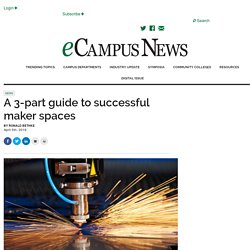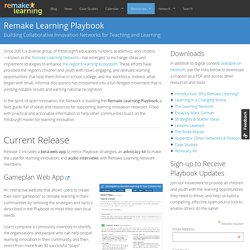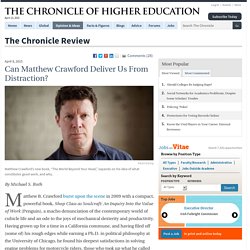

Makerspaces. Web Pages and other Resources on Makerspaces. Makerspaces. Stocking a Makerspace. Tinkering Spaces: How Equity Means More Than Access. The Maker Movement has helped spur renewed interest in hands-on learning and the value of spaces where children can explore their own ideas, be creative, and tinker.

Some schools have made makerspaces and FabLabs a priority, building making activities into the curriculum and encouraging kids through afterschool activities. In large part, this new excitement has come from a predominantly white, male sensibility and conversations about equity and tinkering tend to focus on questions of access to makerspaces and to tools. Makerspaces are much less common in low-income schools where the academic focus remains on raising test scores, often through drill and practice.
However, many communities of color have long traditions of using their hands for work and play that get left out of the discussion around making. Existing inequities play out when adults engage with kids around tinkering or making. One activity students have when they dive into technology is to take apart electronics and toys. Educator with a Maker Mindset. A 3-part guide to successful maker spaces - eCampus News.
Cohesion between purpose, people, and parts & pieces are key to a successful maker program say experts.

A recent panel hosted by The New Media Consortium detailed a framework for designing maker spaces and maker programs, allocating resources, and supporting making as a quality learning experience. “Learners as Creators” was the latest webinar in the NMC Beyond the Horizon series, and featured insight from panelists Tim Carrigan of the Institute of Museum and Library Sciences (IMLS) and Peter Wardrip from the Children’s Museum of Pittsburgh. The webinar comes at an opportune time, as maker spaces and the maker movement are increasingly emerging in college and universities over the past few years (e.g. MIT’s maker admissions, these collegiate maker labs across the country). The maker movement has provided an important outlet for students to bring their ideas to life through actions like modeling, prototyping and creating using a range of technologies and tools, such as 3D printing.
Playbook. Since 2007, a diverse group of Pittsburgh’s educators, funders, academics, and citizens—known as the Remake Learning Network—has emerged to exchange ideas and implement strategies to enhance the region’s learning ecosystem.

These efforts have provided the region’s children and youth with novel, engaging, and relevant learning opportunities that help them thrive in school, college, and the workforce. Indeed, what began with small, informal discussions has blossomed into a full-fledged movement that is yielding notable results and earning national recognition. In the spirit of open innovation, the Network is building the Remake Learning Playbook, a field guide full of ideas and resources for supporting learning innovation networks.
Filled with practical and actionable information to help other communities build on the Pittsburgh model for learning innovation. Current Release Gameplan Web App Advocacy Kit This first edition of the Remake Learning Advocacy Kit includes: ISTE 2015. ISTE15 - Arts Integration and Technology. Making Space - @aynorhslibrary. Haiku Learning : 8th Grade PLTW : The Design Process. ISTE 2015. Apps and Websites for Makers and Creators. Creating an Authentic Maker Education Rubric. While many teachers are excited about the maker movement and may even be creating projects for their classrooms, assessment can be puzzling even to veteran classroom teachers.

How can teachers prove that deep, rich learning is occurring through making? How do we justify a grade to students and parents alike, especially to the student who "just isn’t good at art"? By crafting a three-part rubric that assesses process, understanding, and product, teachers can rest assured that they are covering all the bases. Part 1: Process The process of making in the classroom needs to be incorporated in the final grade. Photo credit: Lisa Yokana As part of a recent project in my school's senior-level public policy class, students crafted scale models of Lower Manhattan in preparation for a disaster simulation.
Students created a scale model of Lower Manhattan in City 2.0 at Scarsdale High School. Part 2: Understanding. StoryCamp Hacktivity Kits. Library MakerSpaces on Pinterest. Makerspace-Playbook-Feb-2013.pdf. The philosophy of educational. The environment and tools of g.
Can Matthew Crawford Deliver Us From Distraction? By Michael S.

Roth Matthew B. Crawford burst upon the scene in 2009 with a compact, powerful book, Shop Class as Soulcraft: An Inquiry Into the Value of Work (Penguin), a macho denunciation of the contemporary world of cubicle life and an ode to the joys of mechanical dexterity and productivity. Having grown up for a time in a California commune, and having filed off (some of) his rough edges while earning a Ph.D. in political philosophy at the University of Chicago, he found his deepest satisfactions in solving engine problems for motorcycle riders, those who took up what he called the "kingly sport that is like war made beautiful.
" He doesn’t sound like somebody who has much acquaintance with war, but no matter. To Make. Make Summer.